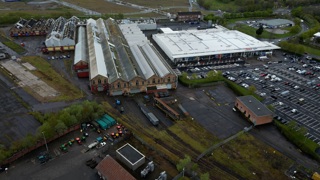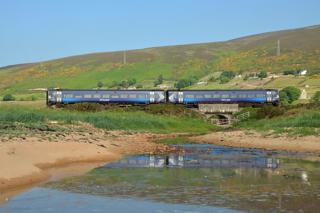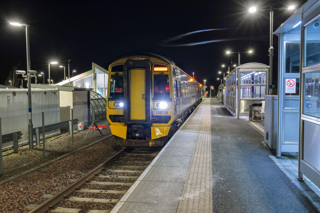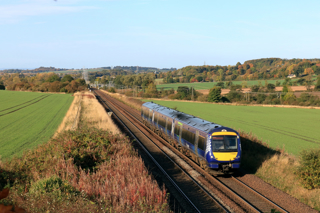The Rail and Urban Transport Review calls for an integrated transport strategy. Philip Haigh examines what is needed for investment from both the public and private sectors to aid railway growth while also rewarding their financial commitments.
In this aticle:
The Rail and Urban Transport Review calls for an integrated transport strategy. Philip Haigh examines what is needed for investment from both the public and private sectors to aid railway growth while also rewarding their financial commitments.
In this aticle:
- Rail companies and the last Labour government made big promises for rail investments involving private funding.
- Today, Labour's plan for Great British Railways revisits public-private partnerships (PPPs).
- Juergen Maier's latets plan advises a careful approach to PPPs, proposing measures to reduce risk and make projects like HS2 more attractive for private funding.
Let’s all go back to the year 2000.
Rail companies marked that summer with a series of ambitious announcements that would flood the network with private money.
We saw Stagecoach pledging £3 billion (£5.5bn in today’s money) to redouble the West of England line to Exeter (RAIL 388), which British Rail had cut back decades earlier to save money.
Not to be outdone in efforts to secure the South Western franchise, FirstGroup pledged £2bn (£3.7bn today) in a proposal that included a tunnel from Wimbledon to King’s Cross via Chelsea, Victoria and Tottenham Court Road (RAIL 392).
Then there was Virgin’s £8bn (£15bn) bid for the East Coast Main Line franchise that included a new high-speed line between Peterborough and Doncaster, York-Northallerton rebuilt for 205mph running, and a cut-off to avoid Morpeth (RAIL 387).
Speaking at a press conference that July, Virgin Non-Executive Director Will Whitehorn said: “We think that it’s right and proper that franchises should invest directly to improve the railway, so that’s part of our bid too.”
That same month, Labour Deputy Prime Minister John Prescott stood up in Parliament to announce a ten-year transport plan that pledged £60bn (£110bn) for the railways (RAIL 389). Of this, £34bn would come from the private sector.
Prescott said: “We are securing long-term investment through long-term partnership contracts: new rail franchises lasting up to 20 years, 30-year contracts for roads, and 30-year contracts for the London Underground.
“But let me make it absolutely clear. If we put in public money, we expect rail and bus companies - and local authorities - to deliver the goods: more investment and better services for the travelling public, on budget and on time.”
He added: “We shall deliver better quality for the travelling public, lower regulated fares, 50% more passengers and 80% more rail freight, and a new Strategic Rail Authority with a new rail modernisation fund of £7bn to help deliver these goals.
“So, we shall deliver a railway system that is better for the passengers, better for freight, better for the economy, and better for the environment - win, win, win and win again.”
This was the era of public-private partnerships, with Sir Alastair Morton (chairman of the newly created ‘guiding mind’ the Strategic Rail Authority) promoting ‘special purpose vehicles’ to bring private investment into the rail network.
Prescott’s department said the £7bn rail modernisation fund would be used to lever private investment into long-term projects.
In the event, only Chiltern secured one of Prescott’s 20-year franchises. But it delivered on the promise of infrastructure investment with Project Evergreen. This added platforms at London Marylebone, redoubled sections of line, built a new depot at Wembley, improved line speeds, and rebuilt the line into Oxford (including a new chord at Bicester).

The other ambitions, and much of Prescott’s plan, foundered just south of Hatfield that October, when a GNER express derailed on a shattered rail (RAIL 395), plunging the railway into a crisis that led to private track owner Railtrack being put into administration. Government replaced it with nationalised Network Rail.
The prospect of vast sums of private money improving Britain’s rail network evaporated. There were improvements, and today’s railway is better for schemes such as Thameslink, High Speed 1 and the East London Line extension, but they relied on taxpayer money.
Fast forward nearly a quarter of a century, and we have once again a Labour government talking about creating a guiding mind - this time called Great British Railways. (It was also Labour that axed the Strategic Rail Authority after just a few years, so that it could take more direct control in the Department for Transport.)
We also have public-private partnerships being talked up, together with special purpose vehicles.
That call comes from former Siemens Chief Executive Juergen Maier, who was commissioned by Labour (when in opposition) to examine how to improve Britain’s transport network.
His report appeared in August and talks about “a bold long-term vision and ambition for transport infrastructure”, “accelerating delivery of transport infrastructure across the nation”, and “harnessing the benefits of public-private partnerships”.
Maier explains: “Major transport infrastructure projects will likely require a mixture of public and private investment, where the public sector proactively drives stability and confidence in private sector investment. So, we need a new integrated partnership approach between the public and private sector.”
He goes on to say: “We propose that HM Treasury adopts a new openness towards partnering with the private sector on major transport projects, supporting the country to fulfil its economic and productivity potential by unlocking significant financial investment.”
Taking Maier’s work forward will be a tough challenge for Transport Secretary Louise Haigh.
When Prescott revealed his plan in 2000, he’d managed to undo nearly half-a-century of Treasury distrust towards rail.
That distrust dated back to British Railway’s Modernisation Plan of 1955, which managed to spend £33bn (in today’s money) on unsuccessful diesel locomotives and marshalling yards that were redundant even as they opened.
Today’s Treasury can rightly ask the DfT why it didn’t deliver the Great Western electrification programme as originally agreed and funded. It was supposed to reach Oxford and Bristol Temple Meads, but operator Great Western Railway must still burn diesel to reach these stations.
Treasury could also ask why High Speed 2’s finances are so adrift from what was promised. The answers will make for difficult DfT reading, because it can’t escape the fact that it has been the government department overseeing rail spending for the past 20 years.
Treasury might also ask about the fate of those 30-year public-private partnership contracts that John Prescott launched for London Underground.
The National Audit Office provided some of the answers in 2009, when it examined the collapse of Metronet which held two of the three LU PPP deals (Tubelines held the other contract).
Metronet’s collapse forced the DfT to provide £1.7bn as “an unanticipated upfront cost to the taxpayer” to repay Metronet debt obligations.
It sweetened this pill by explaining that this figure was not a direct loss - that was only £170-£410m (£280-£670m today) - because we benefited from Metronet’s capital spending.
Metronet failed because it couldn’t fund its spending commitments. The NAO said the main cause was poor corporate governance and leadership, but it also explained that the DfT had few levers to manage risks to taxpayers and that it had to rely on others to monitor Metronet’s performance.
Maier is surely right that money for improving Britain’s rail network must come from both public and private sectors. Neither can afford it on their own, and the government has other priorities competing for taxpayer money or borrowed cash.
Yet he and the Transport Secretary face a situation in which private money receives a hostile welcome on the railway. Many commentators appear to hate the fact that rolling stock companies (for example) invest private money to buy trains, because this investment comes with a return in the form of profits.
This dislike of profits is the main driver behind taking train operating contracts in-house under Great British Railways, which forms one of Labour’s key transport policy pledges. It will be a neat trick for Labour ministers to simultaneously say they don’t want private sector companies involved in rail, while also asking for private money to invest in rail.
Maier suggests some boundaries for PPP projects which might make them easier to deliver. They include: using PPPs on transport corridors with strong demand; where land is already acquired and planning permission is in place; where project design and engineering is straightforward, where projects can be split into tranches; where infrastructure is reasonably segregated from existing networks; and where projects generate some form of revenue or income that allows the private sector to recoup its investment.
This seems to me to be a list of factors that reduce the risks the private sector might face. And that feeling is strengthened when he goes on to suggest that the public sector could finance enabling works for projects.
This could be things such as moving utilities, which has proved an expensive part of recent tram projects and a source of overspending.
Yet Maier’s list also seems tailored towards getting High Speed 2 moving again, particularly the first part of its second phase from the West Midlands to Crewe. It’s simpler than the first phase, has the land needed and parliamentary approval, and is reasonably segregated from Network Rail’s West Coast Main Line.
Whether it generates sufficient revenue or income to recoup private investment remains open to question.
Yet at the heart of any PPP is the question of who is on the hook if it all goes wrong. Metronet showed that the risk remained with the government, yet government did not have the levers it needed to control that risk.
That leaves the DfT with two challenges. It must convince the Treasury that rail is worthy of continued public sector investment. Then it must design a framework that properly shares risk between public and private sectors.
That’s a tall order, particularly if the Transport Secretary wants to move fast.
Login to continue reading
Or register with RAIL to keep up-to-date with the latest news, insight and opinion.


















Login to comment
Comments
No comments have been made yet.